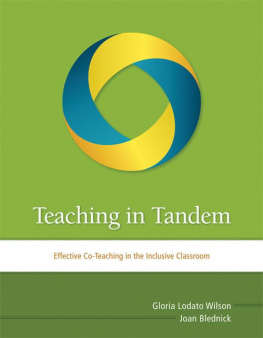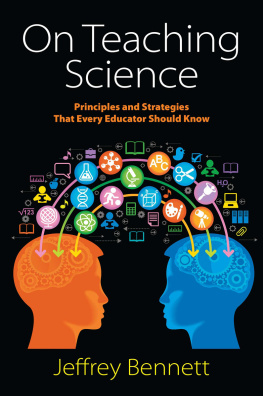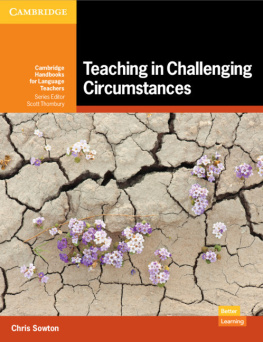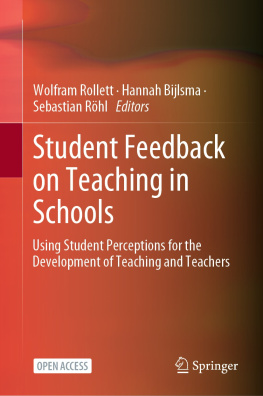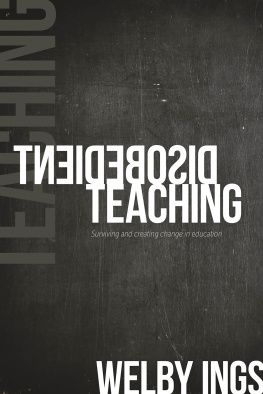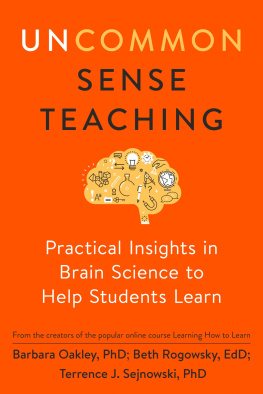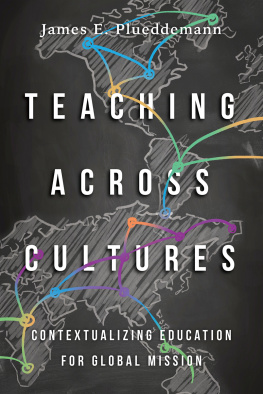Copyright 1999 by James W. Stigler and James Hiebert
All rights reserved,
including the right of reproduction
in whole or in part in any form.
Stigler, James W.
The teaching gap : best ideas from the worlds teachers for improvingeducation in the classroom / James W. Stigler and James Hiebert
p. cm.
Includes bibliographical references and index.
1. MathematicsStudy and teachingUnited States.
2. MathematicsStudy and teachingGermany.3. MathematicsStudy
and teachingJapan.4. Comparative education.I. Hiebert, James.
II. Title.
QA13.S77 1999
510.71dc21 99-27270
Preface
T HIS BOOK IS ABOUT teaching and how to improve it. It is not another attempt to bash teachers or blame them for the ills that beset Americas schools. It is also not another set of recommendations that tell teachers how to teach. It is, instead, a tribute to the importance of teaching, and to the key role that teachers must play in its improvement. School learning will not improve markedly unless we give teachers the opportunity and the support they need to advance their craft by increasing the effectiveness of the methods they use.
Our viewpoint arises from a collaboration that started more than five years ago. At that time, the Third International Mathematics and Science Study (TIMSS) was well into the planning stages. This study, the latest in a series of international studies stretching back more than thirty years, compared mathematics and science achievement among students in forty-one nations. TIMSS was the most carefully designed international study of achievement ever conducted. One component of TIMSS was a video study that compared the teaching of eighth-grade mathematics in Germany, Japan, and the United States. The video study, on which we collaborated, marked the first time ever that national samples of teachers had been videotaped teaching in their classrooms. For the first time, we could see what teaching actually looks like on a national scale, and we could do this for three countries.
Figuring out how to analyze and summarize these videos was challenging. But it also was a breathtaking experience. We often are blind to the most familiar aspects of our everyday environment, and teaching turns out to be one of these aspects. Looking across cultures is one of the best ways to see beyond the blinders and sharpen our view of ourselves. As we looked again and again at the tapes we collected, we were struck by the homogeneity of teaching methods within each culture, compared with the marked differences in methods across cultures.
Readers who are parents will know that there are differences among American teachers; they might even have fought to move their child from one teachers class into another teachers class. Our point is that these differences, which appear so large within our culture, are dwarfed by the gap in general methods of teaching that exist across cultures. We are not talking about a gap in teachers competence but about a gap in teaching methods. These cross-cultural differences in methods are instructive because they allow us to see ourselves in new ways.
But the teaching gap we describe refers to more than cross-cultural teaching differences. It refers to the difference between the kinds of teaching needed to achieve the educational dreams of the American people and the kind of teaching found in most American schools. Although many of the American teachers we observed were highly competent at implementing American teaching methods, the methods themselves were severely limited.
The teaching gap becomes even more significant when one realizes that while other countries are continually improving their teaching approaches, the United States has no system for improving. The United States is always reforming but not always improving. The most alarming aspect of classroom teaching in the United States is not how we are teaching now but that we have no mechanism for getting better. Without such a mechanism, the teaching gap will continue to grow.
This book started out as a description of teaching in different cultures based on the data we collected in the video study. As we wrote the book, however, these differences in teaching methods turned out to be only part of the story. Equally important are the general truths we came to understand about teaching and the implications of these truths for the improvement of classroom teaching. Thus, although this book was initially intended as a report of the TIMSS video study, it quickly became much more than that. We do describe mathematics teaching in Germany, Japan, and the United States. But we also examine current reform efforts in the United States, and based on what we learned about teaching and about learning to teach, we propose a new plan for improving classroom teaching in the United States. Because the video study focused on eighth-grade mathematics, most of the classroom examples we present are from eighth-grade mathematics classrooms. The points we make go well beyond mathematics, howeverand certainly well beyond eighth grade. Mathematics teachers might find the book especially interesting, but our intention became to write a book that would be of interest to teachers in all subjects at all levels.
Teachers are not the only audience for this book. We have written it for school administrators, policymakers, politicians, and parents. Although teachers hold the key, they teach in a system that currently works against improvement. Unless other important players get involved, our country cannot implement a program that allows teachers to improve teaching. This would be unfortunate, not because it would miss an opportunity but because it would miss the only opportunity. The system must support teachers to improve teaching, because teachers are the key to closing the gap.
This book, and the study from which it grew, could not have been completed without the help of many people.
The TIMSS video study was funded by a contract from the National Center for Education Statistics (NCES), U.S. Department of Education, to WESTAT, Inc. The views expressed in this book, however, should in no way be construed to be those of NCES or of the U.S. Department of Education.
We are grateful to Emerson Elliot, past commissioner of NCES, and to Pascal Forgione, the current commissioner, whose support and enthusiasm went well beyond the financial. Lois Peak, the NCES program officer who oversaw the study, worked tirelessly to help us through the intricacies of a government project. Without her unwavering belief in the importance of this work, the study would never have been done. And we thank Nancy Caldwell of WESTAT for her constant and dependable help throughout the contract.
The TIMSS video study could not have been done without the help of our international collaborators. Juergen Baumert and Rainer Lehmann (in Germany) and Toshio Sawada (National Institute of Educational Research, Tokyo) managed the data-collection process and helped us to understand teaching in their countries.
Clea Fernandez, of Teachers College/Columbia University, played a major role in the early planning and conceptualization of the project; Scott Rankin trained the videographers for the study; Takako Kawanaka, Steffen Knoll, and Ana Serrano led our coding-development efforts; Patrick Gonzales managed the transcription and translation process and contributed to our analyses of classroom discourse; Eric Derghezarian, Fumiko Ichioka, and Nicole Kersting worked endless hours in the analysis of videotapes; Gundula Huber and Alyne Delaney handled the digitizing of the tapes; and Ken Mendoza wrote the software that enabled us to manage the huge quantity of video collected in the study. We want to recognize these individuals for the important role they played in the project.



